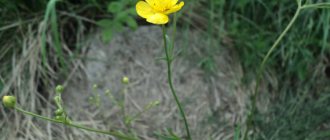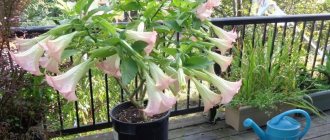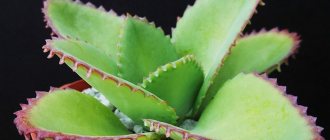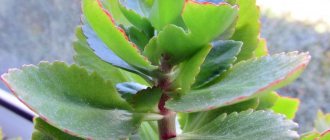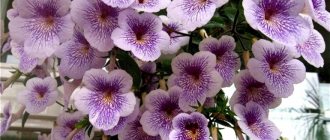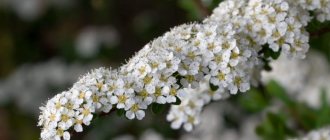Gypsophila or Kachim (lat. Gypsóphila) is a genus of flowering plants in the Carnation family. Translated, it means “lime-loving,” which characterizes its growth zone. There are approximately 150 varieties of gypsophila. Representatives of this culture are able to decorate any garden plot. Because of its characteristic light and airy appearance, this plant is also called tumbleweed, baby's breath, gypsum, or bridal veil. Gypsophila can be bushy in the form of small subshrubs, as well as in the form of branched herbs.
Types and popular varieties
Among the many species of gypsophila there are annuals, perennials, shrubs and grass. According to The Plant List material database for 2013, the crop includes 152 species. Below are some of them.
Graceful
Gypsophila graceful is a brightly flowering ground cover that is planted in flower beds, alpine slides, for group installations and for cutting. Forms a wide cushion up to 50 cm high. This species came into cultivation at the beginning of the 19th century. It grows in Asia Minor. This herbaceous annual plant begins to bloom 1.5 months after planting. The ideal soil for gypsophila graceful is acidic limed soil. The plant blooms for 3 weeks, so it is necessary to sow the seeds in several stages to extend the flowering period.
The most popular varieties of graceful gypsophila are:
- Rose - during flowering it is covered with pink flowers.
- Carmine - blooms with red flowers.
- Double Star is a low variety that grows up to 20 cm and blooms with bright pink flowers.
Paniculata
Due to its perennial nature, the plant does not require annual planting. Therefore, this variety is one of the most common in cultivation. Gypsophila paniculata is a subshrub, 60 to 120 cm high with a spherical crown. It grows in the territory from Central Europe and Central Asia to the southern part of Western Siberia.
Gypsophila paniculata has been cultivated since the mid-18th century. Thanks to the saponins contained in its roots, gypsophila was used on the farm. These organic compounds foamed the water, which helped the tonic wash fabrics and wool fabrics.
This type of crop is planted in rockeries, mixborders and individual plantings. The plant looks great as a decoration for bouquets and decoration. Gypsophila paniculata is characterized by white, sometimes pink flowers, the size of which can reach 6 - 8 mm. The subshrub blooms in summer and early autumn.
Snowflake
Snowflake is a popular variety of gypsophila paniculata. It grows as a spreading branched bush up to 50 cm tall. During the flowering period, the plant is covered with double, large white flowers. Gypsophila paniculata Snowflake is a long-lived plant. Without transplantation in one place, it can live up to 25 years with proper care. This is a very light-loving plant. Only in the hot afternoon will she need a little shade from nearby plants. The plant requires minimal watering. It requires moisture only during drought; it must be watered right at the root. Looks ideal next to densely flowering ornamental garden crops.
Rosenschleier
The Rosenschleier variety is a hybrid of paniculata and creeping gypsophila. The plant has a small height - up to 40 - 50 cm, while it spreads widely across the soil as lush branched bushes. Has a powerful root system. The areola of culture is Russia, Europe, the northwestern part of China, Mongolia. The shrub blooms with double white and pink flowers with a diameter of 6 mm. The flowering period usually lasts longer than that of other representatives of this crop. Grows in well-lit areas, tolerates slight shading. In one place without replanting, a plant can live for 7 - 9 years. Grows well in dry, clay-sandy, well-drained, calcareous and fresh soils. Gypsophila Rosenschleier looks great in flower beds and framed along paths. It is actively grown as a cut flower - gypsophila branches are used to create living bouquets and as dried flowers.
Flamingo
Flamingo is a decorative tall variety of gypsophila. It is a shrub 120 - 140 cm in height with double large flowers of purple and light pink color with a thick cover of leaves and inflorescences. The flowers of the plant are up to 6 mm in diameter, the leaves are narrow, long and light green. The flowering period of Flamingos is from June to August. Flamingos are easy to care for, but the soil must be kept moist.
Bristol Fairy
Bristol Fairy is a perennial variety with highly branched stems that form a lacy, spherical bush. The shrub grows to 60 - 75 cm in height. The leaves are narrow, gray-green, double flowers, up to 12 mm in diameter, white. Bristol Fairy begins to bloom in July. This variety is grown mainly for cutting, for arranging live bouquets and dried flowers.
Pink Star
Gypsophila paniculata Pink Star is a perennial variety that grows up to 120 cm in height. Knobby branched stems, especially at the top, form an openwork rounded bush. The inflorescences are paniculate in shape with flowers about 1 cm in diameter. The flowers are double and have a dark pink color. The plant blooms for up to 3 months and does not require careful care. In the garden it is planted in groups or next to other plants. This variety is actively used by florists, as it does not lose its appearance even in dry form. Looks great in bouquets with roses.
Creeping
Creeping gypsophila (Gypsophila repens) gets its name from the shoots that spread along the ground. This perennial plant is a dark green herb that forms dense bushes, approximately 20 - 25 cm high, growing up to 30 - 50 cm wide. This is a perennial, sun-loving variety that can grow in one place for 20 - 25 years .
The culture is widespread on the dry chalk mountain slopes of Southern and Central Europe.
Creeping gypsophila blooms almost all summer. The star-shaped flowers of the plant form paniculate inflorescences. Creeping gypsophila is often planted on alpine hills, rocky gardens and stone walls.
The variety is unpretentious to soil composition, so it can be grown in clay soil with neutral or alkaline acidity. However, stagnation of moisture can lead to the formation of fungal diseases. Creeping gypsophila shrubs are frost-resistant and tolerate drought well.
Grow bell seedlings without making mistakes: 5 useful tips
The culture became known to gardeners from the end of the 18th century. For the love of gardeners for this variety, creeping gypsophila has earned a prestigious award from the Royal Horticultural Society of Great Britain.
Fretensis
The creeping gypsophila variety Fretensis has the appearance of low-growing shrubs up to 25 cm high. Fretensis blooms with small pink flowers. The plant begins to bloom in June and ends in August. The leaves are dark green, the flowers are collected in paniculate inflorescences.
Monstrosa
Gypsophila creeping Monstrosa (Monstrosa) are shrubs creeping along the ground no more than 15 cm high. The flowers of the plant are snow-white with a pinkish tint, miniature, with long green stamens, shoots are erect.
Phillow rose
Seedlings of the Filou Rose variety grow up to 20 cm in height, have creeping shoots, and form small shrubs. Flowering lasts all summer with pink flowers. From the outside it looks like a colored pillow. The oblong leaves are dark green. The soil needs to be kept moist and watering needs to be done at the roots. Well suited for a sunny area, grows quickly. The plant must be protected from moisture stagnation. Phillow rose grows well, so the planting should not be dense. It is recommended to plant on drained, loose soil. Goes well with other plants as a decoration for rocky decorations.
Blush
Rumyana is a compact variety of gypsophila that blooms in June - July. Grows up to 10 - 15 cm in height. Blush has creeping stems with numerous pink flowers and dark green leaves. After flowering, the seeds ripen and remain viable for a long time. It tolerates cold without problems, but the growing plant needs shelter for the winter. Loves sunlight; light, dry, waterproof soil is best for the plant. It grows actively and can live in one place for 25 years without transplantation. Perfect for rock gardens and garden decoration.
Isplicular
Gypsophila is a perennial decorative subshrub with a height of 10 to 20 cm, the diameter of which reaches 40 cm, and grows rapidly. Probably the smallest perennial ground cover plant variety. The seeds are small - 2000 pieces weigh about 1 g. The leaves of gypsophila are rounded, with slight pubescence, the flowers are small snow-white or purple with pink veins up to 2 cm in diameter. The flowers form paniculate inflorescences. Flowering continues from early May to late June. The root system is powerful, the stems are thin, located close to the ground. The variety is frost-resistant and loves open, dry, sunny areas. The soil for the plant is recommended to be sandy loam, rich in lime. It grows abundantly in European gardens, where the flowering period begins in April. This variety of gypsophila looks great in hanging containers, flower pots and baskets, rock gardens, rock gardens, group plantings, and flower beds.
Wall
A low-growing annual plant variety that forms a neat spherical bush with straight stems. The leaves are small, linear, bright green. The flowers of the plant are small, forming paniculate inflorescences. Wall gypsophila blooms throughout the summer. She prefers illuminated areas where slight shading is allowed. The soil for the plant should be light sandy loam or nutritious loamy, drained, with the addition of lime. It is necessary to sow between other tall plants. The most popular variety of wall gypsophila is the Gipsy variety. This is a profusely flowering annual plant that is planted in tubs. The flowers of this gypsophila range from white to pale pink. Requires regular watering.
Pacific
In the wild, Pacific gypsophila (Gypsophila pacifica) grows on the stone coastal slopes of China and Primorye. This perennial variety can grow in one place for up to 4 years. The shoots of the plant are highly branched, the leaves are wide, lanceolate, bluish-gray in color. The flowers are light pink and have a diameter of approximately 7 mm. Once every 3-4 years, plantings are renewed by propagation by seeds. The plant's spreading bushes reach a height of up to 100 cm, so seedlings are planted at a distance of at least 1 m from each other. Pacific gypsophila begins to bloom only in August and gradually ends in September. The variety is planted in rockeries; during flowering it resembles a translucent pink cloud.
Description of gypsophila paniculata
Gypsophila paniculata is a perennial herbaceous plant for open ground. It is used in landscape design as a companion flower for ornamental, flowering, tree-like and herbaceous shrubs. External characteristics of gypsophila paniculata:
- A herbaceous subshrub, the length of the stems, depending on the variety, is 0.5-1 m. The crown is spherical; due to the shape of the shrub, the unofficial name of the plant is tumbleweed.
- The stems are erect, covered with a hard shell, smooth, gray-green, multilaterally branched.
- The young shoots are numerous, with drooping tops; paniculate-type cymoid inflorescences are formed on the lateral shoots.
- The leaves are small, lanceolate, sparsely arranged.
- The flowers are simple or double, bell-shaped, white, five-petaled with a green vertical line in the center. Heterogeneous, self-pollinating culture.
- The fruit is spherical in shape with numerous seeds.
- The root system is taprooted, deepened by 0.8 m.
The flowering time of gypsophila paniculata is 2 months, from July to September. The plant is used for making bouquets and landscape decoration.
Attention! The crop is demanding on the composition of the soil, so it does not get along with all biological species on the site.
House conditions
Some representatives of the culture, such as Gipsy wall gypsophila, can be planted in pots or tubs. Even for unpretentious gypsophila, there are special care rules, this applies to the choice of soil and proper planting. For growing at home, choose low-growing varieties and varieties with creeping shoots.
Temperature
After germination, the pots are placed in conditions with a temperature of approximately 20 ° C
Humidity indicators
The plant is resistant to drought, but does not like excess moisture. Stagnation of water in the soil can lead to rotting of the roots and the formation of fungus. With high air humidity and cool weather, there is a high probability that the plant will be affected by gray rot, a dangerous fungal disease.
Lighting
Gypsophila is a very light-loving plant. Without good lighting, it may not bloom. Daylight hours should be approximately 12 hours. If there is a shortage, it is recommended to organize additional artificial lighting using LED and fluorescent lamps.
Where to keep
It is better to place pots with plants on the southeast or southwest sides of the house with access to direct sunlight in the morning and evening for at least 3 to 4 hours.
Caring for perennial gypsophila
Like every garden plant, gypsophila requires care.
Watering perennial gypsophila
Gypsophila is an undemanding plant, but in hot summer conditions it needs timely and abundant watering, especially for young seedlings. Stagnation of water is harmful to the roots and causes them to rot, so you should think about drainage and removal of excess liquid.
Soil for perennial gypsophila
For good growth and development, the composition of the soil is important. The presence of lime is required, the deficiency of which can be compensated for by additional application (per 1 m³ - 25-50 g). Soil acidity pH is allowed within the range of 6.3-6.7. Every two to three weeks you can apply potassium fertilizers (50 g per 1 m²).
Feeding gypsophila
Gypsophila should be fertilized two to three times during the growing season. It is recommended to water with mullein infusion or use complex mineral fertilizer.
Remember! Fresh manure should not be used to fertilize gypsophila!
Home care
When planting potted varieties of gypsophila, it is worth considering some features of the plant. You need to know how to water the plant correctly, when to plant it, and what the container for planting should be.
Priming
For domestic varieties planted in pots and tubs, nutritious soil of sand and peat in equal parts is needed. The bottom layer is formed from small pebbles or expanded clay so that the holes in the container do not become clogged. Then the seedling container is filled with this mixture. There is no need to thoroughly compact the soil, since gypsophila loves soft, loose soil.
Before sowing, the soil must be moistened. The seeds are laid out on the ground and sprinkled with sand on top. Gypsophila sometimes does not survive transplantation well, and to avoid diving in the future, the seeds in the container are distributed at a distance of about 10 cm from each other. Place a glass or transparent lid on top of the container.
Tara
Gypsophila is planted in pots, cache-pots, balcony boxes, and flowerpots. Creeping low-growing varieties are usually planted this way. As it grows, gypsophila hangs beautifully like an hanging plant. For the winter, balcony boxes are moved to a warm room or greenhouse. For potted species, replanting is carried out in the spring after the plant awakens. In this case, the container is selected a couple of centimeters wider than before.
Watering
Young plants need abundant and frequent watering. This does not depend on where they grow. Potted crops are watered as needed, after the top layer of soil becomes dry. It is important not to allow moisture to stagnate. In the first days, a syringe is used to moisturize. Watering the seedlings is carried out with settled water at room temperature at the root.
Healthy and powerful melon seedlings: 5 wisdom for good results
Fertilizer
Due to the fact that the feeding area is small when growing in a pot, the plant is regularly fed with organic or liquid mineral fertilizers. Fertilizing is carried out from spring to autumn 2 - 3 times a month after watering.
Features of the view
It is distinguished from others by the large size of the plant and flowers. From a distance the bush looks like an openwork light ball. The stems are covered on top with a large number of flowers, single or double, each 8 mm in size. They can be white or pink, creating panicle inflorescences.
The fruit is a multi-seeded capsule containing a huge number of small seeds. There are more than a thousand of them in 1 g, germination lasts 2-3 years. The length of the gypsophila root is 70 cm. It is difficult to replant such a plant, so it is better to plant it immediately in the right place. Bush width 1 m.
From a distance the bush looks like an openwork light ball
Growing in open ground
Sowing into the ground is carried out in April or September. Paniculata gypsophila seeds are sown in March. Young plants are grown in a cool, unheated place in honeycomb containers, which are then replaced with wooden containers. They are planted in separate pots as soon as the leaves appear.
Seeds are planted in a temporary place in April and May. In September, seedlings are placed in open ground. When gardeners sow the seeds of annual gypsophila before the onset of winter, they choose a permanent location in the spring. Perennial varieties are planted at the end of March; they are placed in open ground during the development of the third leaf. Rooted cuttings are planted so that they have time to get stronger by autumn.
Selecting a location
Since gypsophila loves sunlight very much, the place for it should be well lit, light partial shade from plants growing nearby is allowed. In the strong shade of a tree growing nearby, gypsophila will not develop and bloom normally. The plant must be planted in an area with low groundwater levels.
The soil
Gypsophila grows well in clay, limestone and sandy loam soils with minimal moisture. In general, non-acidic soil of almost any composition is suitable for gypsophila, since it is an absolutely unpretentious plant. It is advisable to fertilize the soil with humus before planting at the rate of 6 - 10 kg per 1 square meter. m. It is not recommended to use fresh manure. Humus and very moist soils are not suitable. Before planting, it is recommended to fill the hole with sandy soil. This gives:
- removal of excess moisture;
- increasing soil breathability;
- preventing root rot and the appearance of fungal spores.
Garden varieties are best grown in well-drained soil to protect the plant from flooding during rainstorms. To do this, you need to prepare a sandy substrate and add small stones. It is prohibited to plant gypsophila in wetlands and the shores of artificial and natural reservoirs. In order to remove excess moisture, it is necessary to drain the soil well on the site
Landing dates
The time for planting gypsophila in the garden depends on its variety. For example, for a variety growing in a region with a warm climate in a rock garden, planting in the ground is carried out in early autumn or early spring. Potted species are planted in the spring. The permanent place of growth should be sunny, because this is a light-loving plant that is not afraid of direct sunlight.
Watering
Kachim needs moderate watering, in hot weather it needs to be increased. Garden gypsophila needs to be watered only in dry times, which is when the plant requires constant moisture. Watering is done strictly at the root. There is no need to water the plant before cutting; it is carried out in dry weather so that the stem does not get wet and rot.
Young gypsophila plantings need regular watering; during drought they are watered every day. In hot weather, 4-5 liters of water per square meter is enough for gypsophila a couple of times a week. In order not to harm the inflorescences, water the plant exactly at the root. To avoid acidification of the soil, the water should not contain chlorine.
Flowers are resistant to dry weather. However, lush flowering is ensured by sufficient moisture. It should be borne in mind that plants will not grow well in swampy soils or in lowlands where the groundwater level is high.
Fertilizer
To maintain abundant flowering, mineral complexes and organic fertilizers are used. It is important to ensure sufficient potassium content in the soil. To do this, apply 50 g of fertilizer per square meter of soil once every 2-3 weeks. For organic fertilizers, you can use mullein solution or compost.
Trimming
Since perennial plant varieties quickly grow and lose their well-groomed appearance, they need pruning. Pruning is carried out after flowering and withering of the shoots, usually in mid-October. The bushes are pruned, leaving 2–4 shoots at the base to make the plant more luxuriant. The stems need to be trimmed so that the remaining dry stems are no more than 5 - 7 cm high.
Transfer
The plant is replanted in the fall, after it becomes stronger. The planting location depends on the type of gypsophila. For example, gypsophila paniculata will look good next to large flowers. The ideal place for Creeping Gypsophila is an alpine hill. Planting work is carried out in the following order:
- First of all, you need to prepare the beds and saturate the soil with moisture.
- After this, seeds are sown in the beds and sprinkled with a little soil. The seeds should be no more than 10 cm apart from each other.
- Then the sowing area is covered with film and left for several days in a bright place.
- In the autumn, mature plants are transplanted to any site, leaving a distance of about 20 cm between them, and about 50 cm between tall varieties.
Creeping shoots form dense bushes that look unkempt when crowded into a narrow space. Without replanting, gypsophila can destroy nearby weak plants. Young bushes easily tolerate this process. For the first time we transplant it after 2 years.
The perennial needs to be replanted from time to time. Certain varieties grow in one place for a long time, most, but require replanting.
The procedure is carried out at least once or twice during the entire life of the plant, since for a young two-year-old gypsophila it will pass without consequences, while an older one may get sick.
Collecting seeds
The seeds of the plant can either be bought in a store or collected independently from the plot. Seeds are collected after the gypsophila has flowered. In place of the flowers, achenes are formed, which contain small seeds. Seeds for storage must be ripe and dry. To dry them further, the seeds are poured onto a flat surface, such as a tray, and dried. After collecting the planting material, you need to get rid of foreign impurities; to do this, they need to be sifted through a fine-mesh sieve. After this, you need to put the seeds in a bag and put them in a dry place. Seeds remain viable for 2 - 3 years.
Preparing for winter
Gypsophila is frost-resistant. But gardeners prefer to cover young, not yet mature plants and not very well-known varieties with peat, burlap, foliage, spruce branches and mulch. Sometimes, depending on the weather, the plant under the leaves may rot, then you need to give preference to spruce branches. The best shelter for a plant is snow. If there is a deficiency, you need to add it. The plant will easily survive a snowy winter without wrapping it up. But to be on the safe side, covering the plant with leaves won’t hurt.
Spring treatment
You need to start feeding the plant in early spring. At this time of year there may not be enough sunlight, so it is worth providing the plant with additional lighting. In the spring, seedlings planted in temporary beds in the fall are planted in a permanent place. To achieve continuous flowering of gypsophila, seeds are sown every 2 weeks when the soil warms up. In the spring, gypsophila will begin its growing season and quickly grow again.
Purple leaves on tomato seedlings: timely measures to correct the situation
Perennial gypsophila after flowering
Collecting seeds
In the autumn, after the bush dries out, in the place where the flowers were, small boxes appear containing small seeds; they are similar in size to brown grains of sand. The boxes need to be cut off. In the room, the seeds are poured from them onto a piece of newspaper. They must be dried and ripened in a ventilated room. Dried seeds should be poured into paper bags or cardboard boxes, where they will be stored.
Wintering
At the end of the autumn period, the perennial gypsophila must be cut off, leaving only 3 or 4 powerful shoots at the root. Then the bushes need to be covered with dried leaves or covered with spruce branches, this will save them during a winter with little snow or during severe frosts.
Reproduction
Gypsophila can reproduce vegetatively and by seeds. Annual varieties and certain types of perennials are propagated by seeds. Each method of propagating perennial gypsophila has its own strengths and weaknesses.
Seeds
The seed method is the longest. When using it, you need to remember that the plant may lose its varietal properties or their manifestation several years after planting.
Propagation by seeds is important for annual plant varieties and some perennial varieties. Seeds are sown closer to the onset of cold weather in open ground on a temporary bed. With the arrival of spring, when the seedlings become stronger, they are transplanted to a permanent place.
Since a distance of at least 15 cm must be maintained between the shoots, the emerging shoots are thinned out 1 - 2 weeks after their appearance. You can plant them one by one in peat humus pots. Further growth of gypsophila occurs with additional lighting, since seedlings need 13-14 hours of daylight for timely development, and in mid-spring the days are not long enough. When the seedlings have one or a pair of leaves, they are transplanted to a permanent bed, and due to the fact that perennial species can grow in one place for a long time, planting perennial gypsophila requires the right approach to choosing a site.
Dividing bushes
This technology allows you to quickly propagate kachim without worrying about the loss of varietal qualities. Adult plants of annual and perennial species are propagated by division.
The event is held in September, but if the plant grows in a region with a cold climate - in the first months of spring. The bush is removed from the container or soil and the rhizome is divided into two or three parts with a knife. The delenki are planted in separate boxes or in bright places in the garden.
Cuttings
Cuttings are the most effective method, although it is not considered simple.
Cuttings are taken from young shoots in late spring. They are immersed approximately 2 cm in a loose substrate (can be supplemented with chalk) and kept at a temperature of about 20 ° C with high humidity and daylight for at least 12 hours. Rooted cuttings should be planted in such a way that they take root well before the onset of cold weather.
Pests
Improper care of gypsophila can provoke the appearance of root-knot or cyst nematodes in the root system. Nematodes are colorless roundworms that consume plant sap. A sign of plant damage by nematodes is curled, yellowed leaves with irregularly shaped spots and slow growth. Phosfamide is used against nematodes by repeatedly spraying the plant with it every 3 to 5 days. Radical measures are used when the bush is completely damaged - it is burned, the place where it grows is disinfected. It is forbidden to grow plants in this place for several years.
Another pest, the leafminer moth, attacks shoots and leaves, eating holes in them. Moths are affected by insecticides Bi-58, Rogor-S.
Another parasite, mealybugs are insects that create a loose, floury coating on the plant, sticky spots. The insecticides Aktara and Aktellik are used against them.
It must be remembered that the use of chemicals to get rid of pests and diseases harms the bush, so it is better to create conditions under which the use of harsh measures is not necessary.
Diseases
Gypsophila is resistant to diseases and pests. But violations in plant care can lead to the development of diseases:
- gray rot - leaf plates lose their elasticity, brown, then gray spots with a fluffy coating form along the edges. This disease occurs when excessive watering, stagnation of water in the soil, which affects the root system of the plant. Fitosporin-M and Bordeaux mixture help fight this disease. The affected parts must be removed.
- Rust is a disease in which clusters of red-colored fungal pores of various shapes and sizes occur. In this case, the process of photosynthesis is disrupted. To get rid of rust, the plant is treated with Oxychom, Topaz, and Bordeaux mixture.
Lesions occur under unfavorable growing conditions, too dense planting or poor soil permeability. When diseases appear, the bush is sprayed with fungicides or solutions of preparations containing copper.
For treatment, the plant is treated, for example, with a solution of copper sulfate and laundry soap or Bordeaux mixture. Damaged leaves are removed. The treatment is repeated for a month.
Preparing for sowing
Before you start sowing seeds, it is important to select the most suitable soil mixture and containers for growing the crop, and also to process the planting material.
Seed selection
Planting material can not only be purchased at a specialized store, but also collected from the site yourself. You can start collecting seeds yourself only after the boxes dry out and turn yellow.
When buying seeds, it is important to pay attention to the expiration date, since gypsophila loses its viability over time.
Preparing seeds for sowing
Before sowing, the planting material must be treated, which will make it possible to protect the plants from diseases. The seeds are treated with a solution of soda (1%), boric acid, or potassium permanganate. You can also use Fitosporin. After the processing is completed, the seed will need to be dried a little in the shade.
Many gardeners pre-germinate seeds before sowing. To do this, planting material is soaked in water for 20-25 minutes and laid out on a damp cloth. The seeds are left in a warm room with high humidity until sprouts appear.
Selection of container and soil
To sow gypsophila seeds, you will need to prepare containers 8-10 cm high. Holes are made on the surface of the bottom of each container and a drainage layer (pebbles or expanded clay) is laid.
The container for growing gypsophila seedlings is filled with a mixture consisting of coarse sand and peat. If purchased soil is used for planting, it should be mixed with a small amount of lime. The soil should be soft and loose.
How to paint flowers
Painted flowers can decorate any bouquet and impress with their unusual appearance. For example, the blue gypsophila, beloved by florists, is a painted flower.
The easiest way to paint flowers is white or light shades, but you can experiment with flowers of other colors. For coloring you will need food coloring (quickly dissolving in water), water and jars (for example, jam jars).
- First you need to trim the stems with a knife, avoiding squeezing the trunk and putting pressure on the stem.
- Next, dilute the liquid dye in water.
- Place the stems in the mixture and leave overnight.
- Coloring should begin with a fresh cut. For best results, it is best to use freshly cut flowers.
Painting flowers is a great field for experimentation. You can change the concentration of dyes, you can place the stem in one color on the first day, another on the second day, etc.
You can also paint with special floral spray paint.
What colors go well with?
In the garden, gypsophila will look good with large flowers of bright colors. Weightless gypsophila perfectly complements plants with large inflorescences, such as roses and phlox. Looks good with woody shrub group plantings growing next to stones in limestone soil - with barberry, turf, boxwood, lavender, elderberry. Good for both individual and group plantings. You will get a good combination if you plant carnations, marigolds or godetia nearby. Gives special tenderness to neighboring plants, highlighting their bright inflorescences against a white or pink background.
When making bouquets, gypsophila harmonizes with roses, asters, chrysanthemums, hydrangeas, and daisies as a placeholder. The bouquet will look lush, voluminous, contrasting in combination with asparagus.
Gypsophila harmonizes perfectly with many flowers, so it can become a decoration for any garden. This is an unpretentious, light-loving plant that does not require too much care. However, like any other plant, it has its own characteristics. Thanks to the correct content, it will please the eye for many years.
Brief information about the plant
Gypsophila is an ornamental plant of the Carnation family, taking the form of a herbaceous shoot or subshrub. The culture pleases with long and lush flowering. Gypsophila flowers are white or pink, the length of leafless stems is 10-50 cm, the tap root system is quite powerful.
Gypsophila belongs to the category of drought-resistant and frost-resistant plants, which are recommended to be planted in areas well lit by sunlight. If the seeds are sown in the spring, the first flowering can be expected in the summer.
Gypsophila is also called baby's breath, rockweed and tumbleweed.
